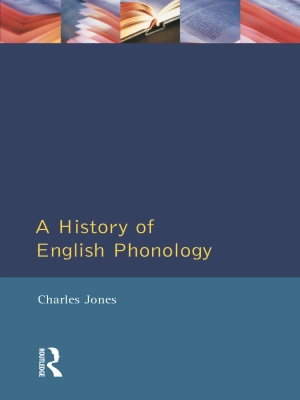A History of English Phonology
A History of English Phonology PDF

That is an try and view historic phonological change as an ongoing, recurrent course of. The creator sees like occasions occurring in any respect intervals, a phenomenon which he considers is disguised by too nice a reliance upon sure traits of the scholarly custom. Thus he argues that these improvements arrived at by audio system of the English language a few years in the past are usually not in precept not like these that may be seen to be taking place at the moment. Phonological mutations are, on the entire, to not be considered distinctive, novel, as soon as solely occasions. Audio system seem to current to speech sound supplies, a restricted set of evaluative and decoding perceptions, along with what would appear to be a finite quantity of innovation producing stratagems in response to their interpretation. It’s pressured that this interpretation might itself be a direct product of the varieties of information chosen for presentation in conventional handbooks and Jones notes the truth that phonological change is commonly “messy” and attentive to a extremely tuned means to understand high quality phonetic element of a kind which, by definition, hardly ever has the chance to floor in historic information sources.
Cowl
Half Title
Title Web page
Copyright Web page
Preface
Acknowledgements
Dedication
Goals, strategies and mannequin
Goals
Methodology
Mannequin
The Early English interval: the beginnings to the thirteenth century
The character of the info
Vowel lengthening processes in Previous English
Compensatory lengthening
Lengthenings in additional basic fricative contexts
Pressured vowel lengthening in nasal sonorant contexts
Lengthening in nasal and non-nasal sonorant contexts: Late Previous English homorganic lengthening
The reconstruction of vowel size
The date of the homorganic lengthening course of
Diphthongization processes in Previous English
Previous English Breaking
Breaking of lengthy pressured vowels
Causes of this diphthongization in pre[x], [r], [l] contexts
Did this diphthongization ever actually occur?
Exceptions to the Breaking course of
Breaking in different fricative contexts
Monophthongization processes: Late Previous English developments to Breaking-produced diphthongs
The instability of contextually derived alternations
Monophthongization and elevating as a unified course of
Center English monophthongization processes
The Center English improvement of the Previous English [eo] diphthong
Particular Kentish developments: syllabicity shifting
Vowel concord processes in Previous English
Backness/labial concord two: Previous English Again Mutation or Again Umlaut
Palatal/frontness vowel concord: Previous English i-umlaut
The character of palatal vowel concord in Previous English
The Center English interval: the thirteenth to the fifteenth centuries
The character of the info
Vowel lengthening processes in Center English
Open syllable lengthening in different languages
Lengthening and reducing as a unified course of
Some additional ideas on open syllable lengthening
‘Exceptions’ to open syllable lengthening
Center English open syllable lengthening as a vowel concord course of
Center English open syllable lengthening and homorganic clusters
Vowel size and vowel elevating: the Center English vowel shift
The primary English vowel shift
The Center English vowel shift
The irregular utility of palatalization/labialization
Diphthongization processes in Center English: Center English Breaking
Center English Breaking in unvoiced velar fricative environments: diphthongization of again mid vowels
Center English Breaking in voiced fricative contexts: Center English [j] Breaking
Diphthongization by [w] vocalization
Center English Breaking within the sonorant consonant [r] and [l] surroundings
Center English Breaking in different sonorant and fricative environments
Different Breaking stratagems: bi-continuant cluster busting
Syllable shapes and their phonetic penalties
Syllable contact factors
Stratagems for attaining ambisyllabicity
‘Shuffling’ the linear sequence of segments in syllables: metathesis
The sixteenth to the eighteenth centuries
The character of the info
Vowel size and vowel shifting: the English vowel shift
Potential motivations for such ‘giant scale’ processes
Vowel shifts as unbiased phonetic occasions
Vowel diphthongizations and lengthenings: Breaking contexts and vocalizations
Extra Breaking stratagems: bi-continuant cluster busting once more
Monophthongization processes
[au] and [ai] diphthongs within the sixteenth and seventeenth centuries
Center English [au] diphthong developments
Different [au] developments
Center English [aei] diphthong developments
Syllable shapes and their phonetic penalties
[h] ‘dropping’ and insertion
Nasals at syllable interface
The eighteenth century to the current day
The character of the info
Vowel size and vowel shifting: the English vowel shift
Vowel shifts and mergers
Merger avoiding stratagems
Diphthongization processes: vowel shifts and diphthongization
Lengthy [ee] mid vowel alternants: a case research of a contemporary dialect
Vocalization and Breaking
[r] effacement and vocalization
Syllable shapes and their phonetic penalties: [r] at syllable interface
Monophthongization processes: monophthongization and merger
Bibliography
Index
Format:PDF
Size: 7,78 MB
Pages:331
Date:1989
DOWNLOAD
A History of English Phonology PDF
Related Posts